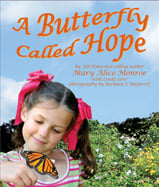Alignment to Standards for MD

| Grade | Number | Standard |
|---|---|---|
| 1 | SC-1.3.0.A.1.c | an organisms external features contribute to its ability to survive in an environment. |
| 1 | SC-1.3.0.B.2. | Provide evidence that all organisms are made of parts that help them carry out the basic functions of life. |
| 1 | SC-1.3.0.C.2. | Recognize that all living things have offspring, usually with two parents involved. |
| 1 | SC-1.3.0.C.2.a | Examine a variety of living things and their offspring and describe what each parent and offspring looks like. |
| 1 | SC-1.3.0.C.2.c | Are parents and offspring more similar than they are different? |
| 1 | SC-1.3.0.E.1. | Describe some of the ways in which animals depend on plants and on each other. |
| 1 | SC-1.3.0.E.1.a | Examine organisms in a wide variety of environments to gather information on how animals satisfy their need for food. |
| 2 | SC-2.3.0.C.1. | Explain that there are identifiable stages in the life cycles (growth, reproduction, and death) of plants and animals. |
| 2 | SC-2.3.0.C.1.c | Given pictures of stages in the life cycle of a plant or an animal, determine the sequence of the stages in the life cycle. |
| 2 | SC-2.3.0.C.1.d | Provide examples, using observations and information from readings that life cycles differ from species to species. |
| 2 | SC-2.3.0.F.1.b | Explain that organisms live in habitats that provide their basic needs: Food, Water, Air, Shelter |
| 2 | SS-2.3.0.B.1.b | Describe and classify regions using climate, vegetation, animal life, and natural/physical features |
| 4 | SC-4.3.0.F.1.a | Explain ways that individuals and groups of organisms interact with each other and their environment. |
| 4 | SC-4.3.0.F.1c | Identify and describe the interactions of organisms present in a habitat: Beneficial interactions: nesting, pollination, seed dispersal, oysters filtering as in the Chesapeake Bay, etc. |
| 5 | SC-5.3.0.E.1. | Recognize that some source of energy is needed for all organisms to grow and survive. |
| K | SC-K.3.0.A.1.a | features (observable parts) of animals and plants that make some of them alike in the way they look and the things they do. |
| K | SC-K.3.0.A.1.c | Identify a feature that distinguishes animals that fly (as an example) from animals that cannot and examine a variety of animals that can fly to discover other similar features they might share. |
| K | SC-K.3.0.A.1.d | Compare ideas about how the features of animals and plants affect what these animals are able to do. |
| K | SC-K.3.0.A.2.c | similarities in what both humans and other animals are able to do because they possess certain external features. |
| K | SC-K.3.0.C.1. | Observe, describe and compare the life cycles of different kinds of animals and plants. |
| K | SC-K.3.0.C.1.a | Identify and draw pictures that show what an animal (egg to frog) and a plant (seed to tree) looks like at each stage of its life cycle. |
| K | SC-K.3.0.C.1.b | Describe and compare the changes that occur in the life cycle of two different animals, such as a frog and a puppy and two different plants, such as a rosebush and a maple tree. |
| K | SC-K.3.0.E.1. | Develop an awareness of the relationship of features of living things and their ability to satisfy basic needs that support their growth and survival. |
| K | SC-K.3.0.E.1.a | Make observations of the features and behaviors of many different kinds of animals within an environment to identify and begin building a list of some of the basic needs these organisms share, such as water, air, etc. |
| K | SC-K.3.0.F.1.c | Describe ways that animals and plants found in each place interact with each other and with their environment. |
| PK-2 | SC-PK-2.1.0.C.1.g | sequence events (seasons, seed growth). |